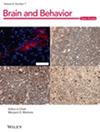Using Magnetoencephalography to Advance the Science of Parkinson Disease: A Systematic Review
Abstract
Purpose
Magnetoencephalography (MEG) offers high temporal resolution and whole-brain spatial coverage, making it a powerful tool to study brain networks. This systematic review examines the use of MEG to study Parkinson's disease (PD) brain network dysfunction, providing an update on scientific advances and identifying knowledge gaps that can be addressed using MEG as a research platform.
Method
Five databases (Cochrane, Embase, PubMed, Scopus, and Web of Science) were systematically searched for MEG-based PD publications from October 2018 (the date of the latest search in the previous systematic review) to June 2025. We used the Joanna Briggs Institute (JBI) checklist to individually assess each paper for quality and relevancy.
Finding
Fifty-four publications were grouped into motor or cognitive domains. Motor resting-state studies were further categorized into four groups: (1) Cortical Pathophysiology and its Modulation by Therapies, (2) Basal Ganglia-Cortical (BGC) Network Pathophysiology and its Modulation by Therapies, (3) Temporal Dynamics, Aperiodicity, and Nonlinearity in PD, and (4) Clinical Utility of MEG. We highlight increases in cortical beta power in response to L-DOPA and its correlation with motor symptom improvement, the broad cortical distribution of beta-gamma phase-amplitude coupling (PAC) in PD and its link to motor symptoms, corticocortical connectivity modulation in response to different treatments, and the integration of MEG with local field potentials to study cortico-subcortical abnormalities. Temporal dynamics, such as cortical beta bursts and reduced functional repertoire, are explored, as well as aperiodic components and nonlinearities in the power spectrum in PD. Clinically, MEG shows promise in optimizing DBS, predicting L-DOPA response, and uncovering movement-related and cognitive pathophysiology in PD.
Conclusion
Key PD knowledge gaps that can be addressed using MEG are identified, including the need to characterize network temporal dynamics and signal interrelation in PD, the causal pathological mechanisms of the disease, and the response to different treatment modalities.


 求助内容:
求助内容: 应助结果提醒方式:
应助结果提醒方式:


